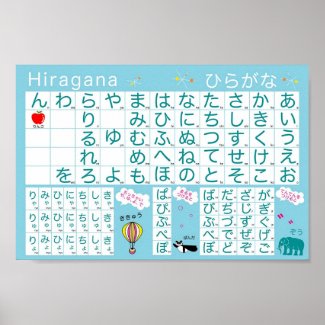Greetings in Japanese、Aisatsu, in Japanese.
おはよう こんにちは こんばんは ありがとう さようなら すみません
ohayou おはよう is "good morning". we usually don't use Kanji for this word but if you use it, it says お早う the Kanji in the middle means "early" or "fast" It makes sense since it's early in the morning.
Ko n ni chi ha こんにちは is "hello" but we say this for the afternoon. 今日は the first two Kanji characters says Today, は pronounces "wa" even though it spells "ha". In Japanese, this は pronounces "wa" works as "is" or "are" in English. postpositional particle I looked upon a dictionary..
so, "Konnichiwa" really means "today is"
Same as "Konbanwa" night greetingsこんばんは 今晩は means "tonight is"
Arigatou ありがとう is Thank you, in Kanji, it 有難う the first kanji means "there" second one is "difficult" so Arigatou means "difficult to be there" so this expresses appreciations for things are there.
My yoga teacher says the opposite of Arigatou is taking it for granted "Atarimae" あたりまえ
it's deep, isn't it?
Next one is, Sayounara (when you spell in English there's no "u" in the middle, but there are "u" to spell in Japanese) さようなら if you write in Kanji, "左様なら" it may be translated to "Ok then,"
Sumimasen, すみません 済みません means excuse me but,
This world comes from "I'm not done" or "I'm not satisfied with myself for what I have done." wow, heavy! nobody put that feeling to this word anymore but originally, it means like that.
I hope you memorized these words today.
Please subscribe and check out other videos too!
Showing posts with label Nihongo. Show all posts
Showing posts with label Nihongo. Show all posts
Sunday, July 7, 2019
Sunday, June 23, 2019
Writing / Typing Japanese: Dotted letters and so on
I'll tell you how to type beyond usual Hiragana chart.
Japanese Hiragana and Katakana, if you add two dots after those letters for example
かきくけこ
Ka Ki Ku Ke Ko
add " at the right above those letters, they becomes
がぎぐげご
it pronounces
Ga Gi Gu Ge Go
Same for さしすせそ becomes
ざじずぜぞ
Za Zi Zu Ze Zo
だぢづでど
Da Di Du De Do
ばびぶべぼ
Ba Bi Bu Be Bo
Then, if you put small circle at the right side above, they becomes
ぱぴぷぺぽ
Pa Pi Pu Pe Po
Next, if you put little や、ゆ、よ after certain letters, you will pronounce for example,
きゃ = kya
きゅ = kyu
きょ = kyo
Like when you type kyouto (Kyoto) きょうと =京都 in Kanji
you will see よ is little smaller.
Sha Shu Sho
しゃしゅしょ
Tya Tyu Tyo
ちゃちゅちょ
Nya Nyu Nyo
にゃにゅにょ
Hya Hyu Hyo
ひゃひゅひょ
Mya Myu Myo
みゃみゅみょ
Rya Ryu Ryo
りゃりゅりょ
Gya Gyu Gyo
ぎゃきゅぎょ
Ja Ju Jo
じゃじゅじょ
Bya Byu Byo
びゃびゅびょ
Pya Pyu Pyo
ぴゃぴゅぴょ
Japanese Hiragana and Katakana, if you add two dots after those letters for example
かきくけこ
Ka Ki Ku Ke Ko
add " at the right above those letters, they becomes
がぎぐげご
it pronounces
Ga Gi Gu Ge Go
Same for さしすせそ becomes
ざじずぜぞ
Za Zi Zu Ze Zo
だぢづでど
Da Di Du De Do
ばびぶべぼ
Ba Bi Bu Be Bo
Then, if you put small circle at the right side above, they becomes
ぱぴぷぺぽ
Pa Pi Pu Pe Po
Next, if you put little や、ゆ、よ after certain letters, you will pronounce for example,
きゃ = kya
きゅ = kyu
きょ = kyo
Like when you type kyouto (Kyoto) きょうと =京都 in Kanji
you will see よ is little smaller.
Sha Shu Sho
しゃしゅしょ
Tya Tyu Tyo
ちゃちゅちょ
Nya Nyu Nyo
にゃにゅにょ
Hya Hyu Hyo
ひゃひゅひょ
Mya Myu Myo
みゃみゅみょ
Rya Ryu Ryo
りゃりゅりょ
Gya Gyu Gyo
ぎゃきゅぎょ
Ja Ju Jo
じゃじゅじょ
Bya Byu Byo
びゃびゅびょ
Pya Pyu Pyo
ぴゃぴゅぴょ
Subscribe to:
Comments (Atom)
